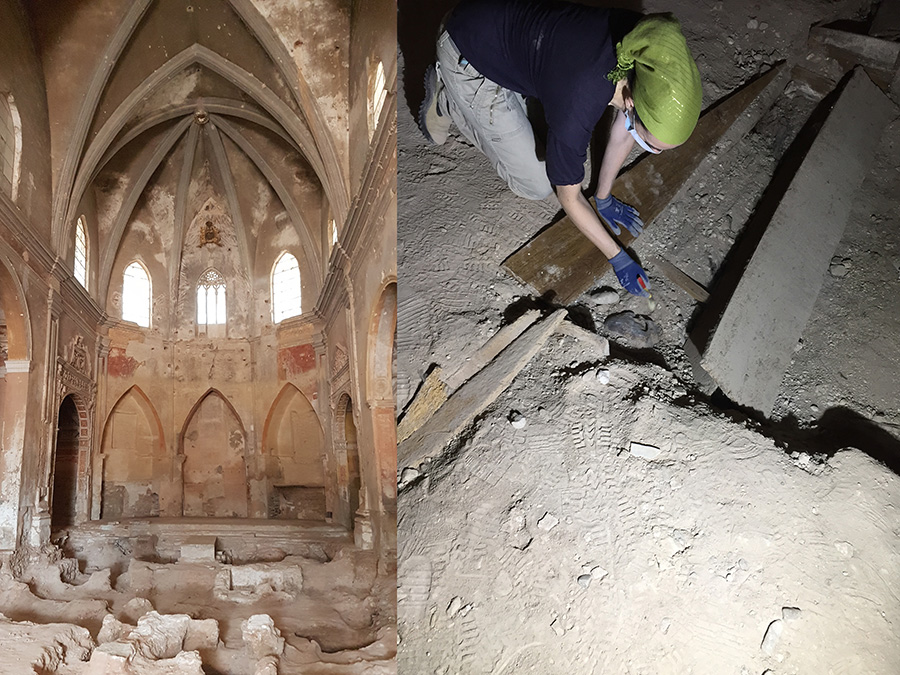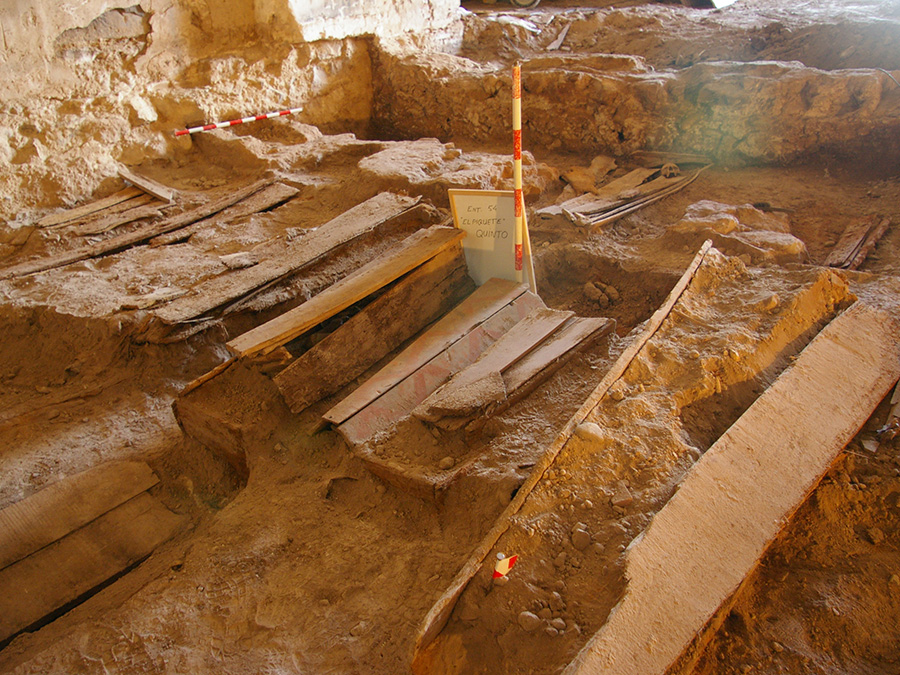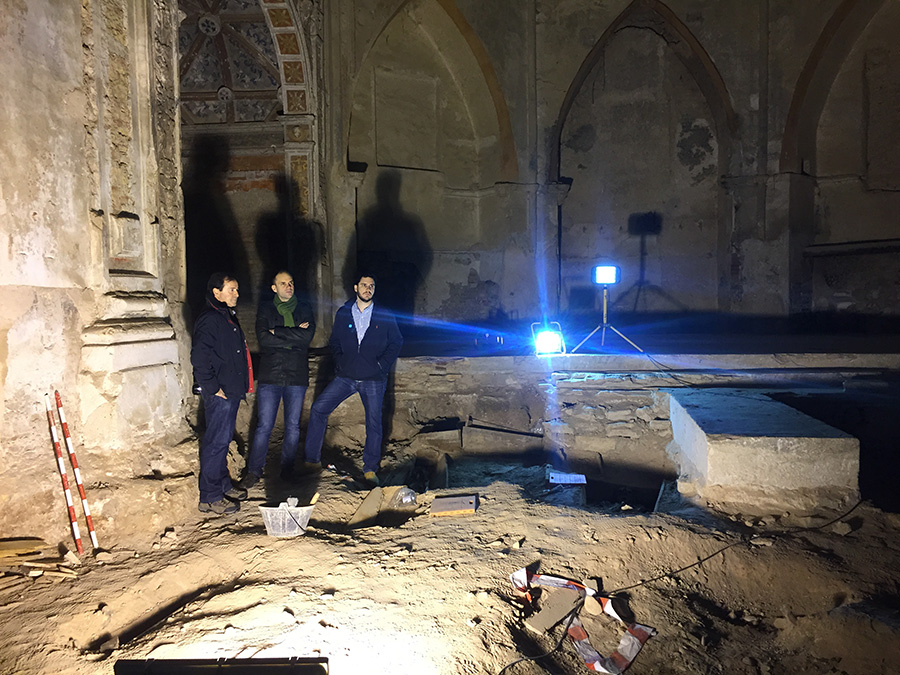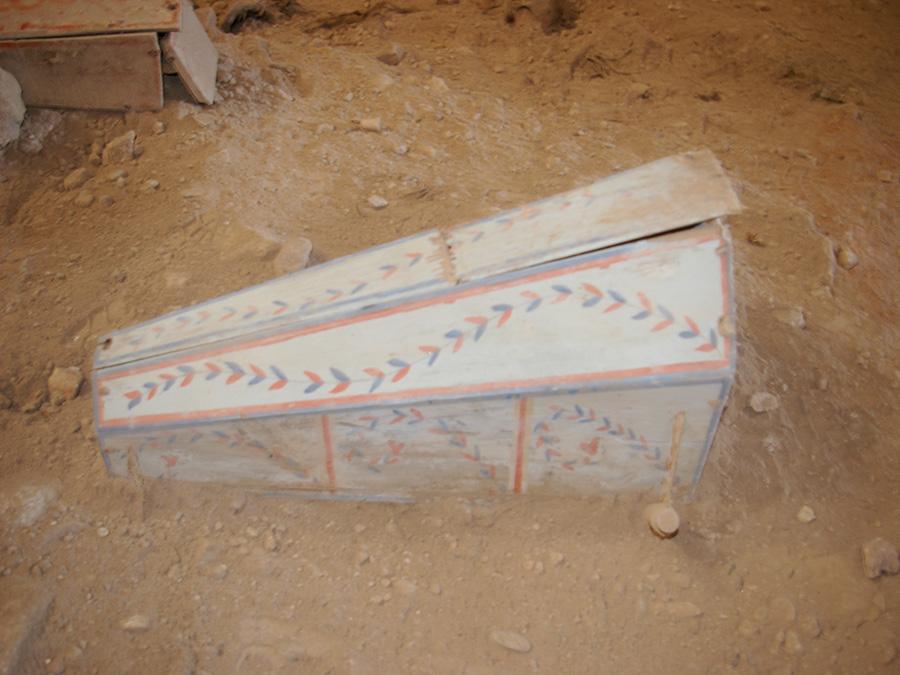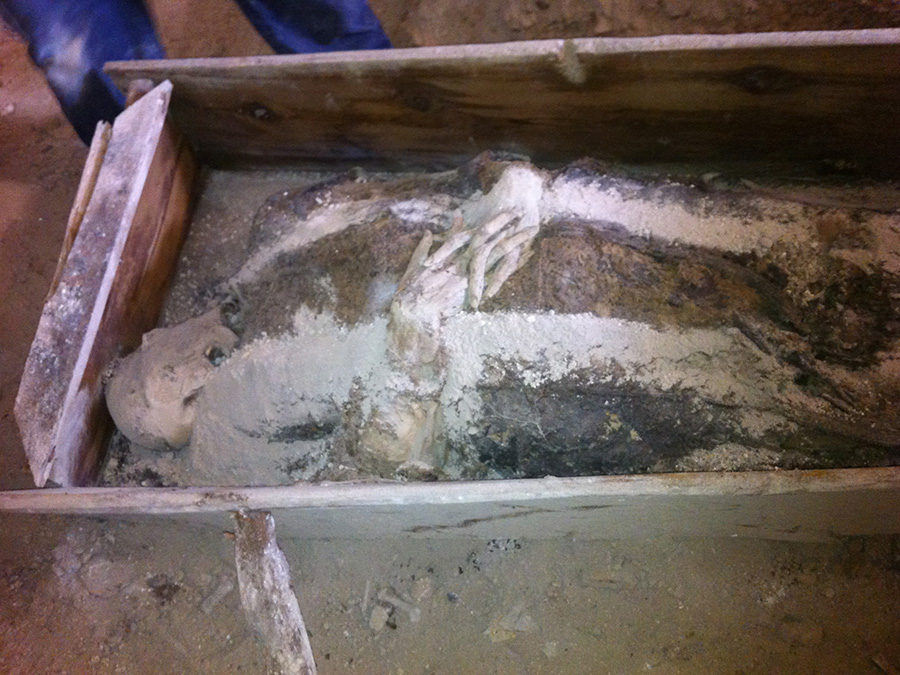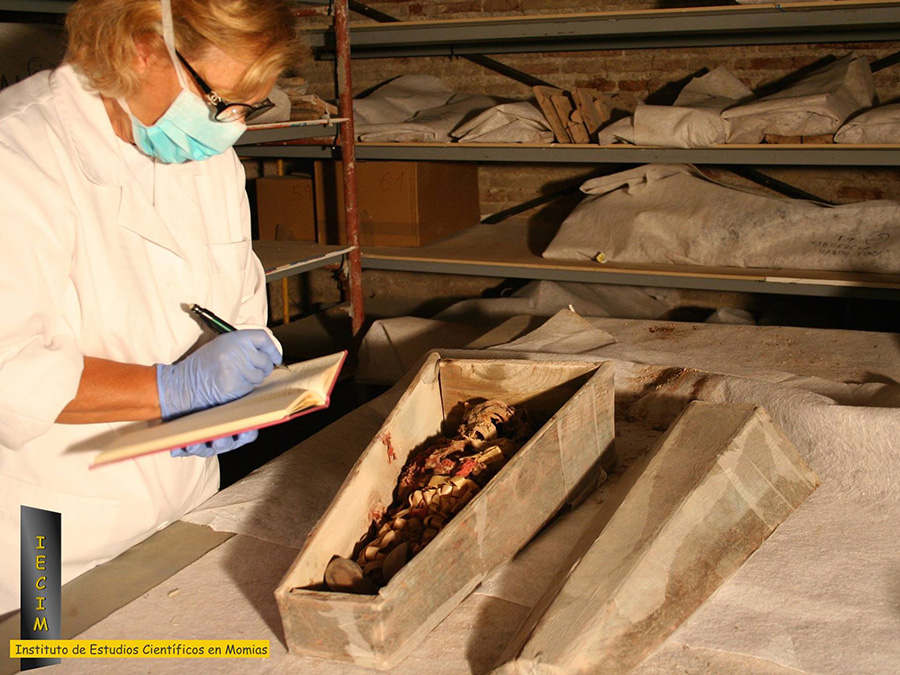Excavation works to install a heating system in the old church of the Ascention of Our Lady stumbled upon 15 mummies and hundreds of unmarked graves. This was an unprecedented find for Spain. A total of 1,061 women, men and children were buried in the church from the fifteen century to 1831.
The church, locally known as “el Piquete” was seriously damaged during the Spanish Civil War (1936-1939), and closed its doors to the public. During the 1960s and 1970s it was used as warehouse to store grain. The combination of the weight of the grain and frequent heavy trucks traffic ended up damaging the floor structure as well. Hundreds of graves and bodies were destroyed by depressions and the sinking of the ground underneath.
Despite this, 15 bodies were left undamaged. The lack of humidity in the environment and soil was key to enabling the bodies’ natural mummification after being interred. All the mummies are well preserved with many of their facial and physical traits intact, along with their clothes and accessories. Most mummies still have perfectly preserved hair and beards. The discovery of the mummies is considered unprecedented because the exceptional conservation of the bodies, and has already attracted national and media attention.
The €1 million project, funded mostly by the Provincial Government of Zaragoza (DPZ in Spanish), involved almost 4 decades of restoration efforts that transformed the wrecked building into a museum. Numerous residents, professionals and organisations have highlighted the importance of its archaeological heritage and have collaborated to restore the building’s original splendour, giving new life to the ancient church. This collaboration made possible the opening of the ambitious new museum in Spring 2018. Quinto borough is proud to host the first museum of mummies in Spain.
Visiting “El Piquete” takes you on a 600 years journey through time, creating a deeply moving effect in the visitor. The monument features cultural and political heritage from different eras, including Gothic, Mudejar and Renaissance Architecture. Mudejar is a style of medieval Iberian architecture and decoration influenced by Moorish design and workmanship. Together with La Seo Cathedral and the Aljafería Palace, El Piquete forms part of the Mudéjar Architecture of Aragon which is a UNESCO World Heritage Site.
Also, in carrying out the internal restoration of the church, a choice was made to display the vestiges of the Civil War as a way of acknowledging the past. The site offers a a snapshot of one the nation’s bloodiest battles, with the bullet and bomb holes still visible inside. But the ruins are also a testament to the resilience of the building and the willingness of the village’s and its people to move forward.


